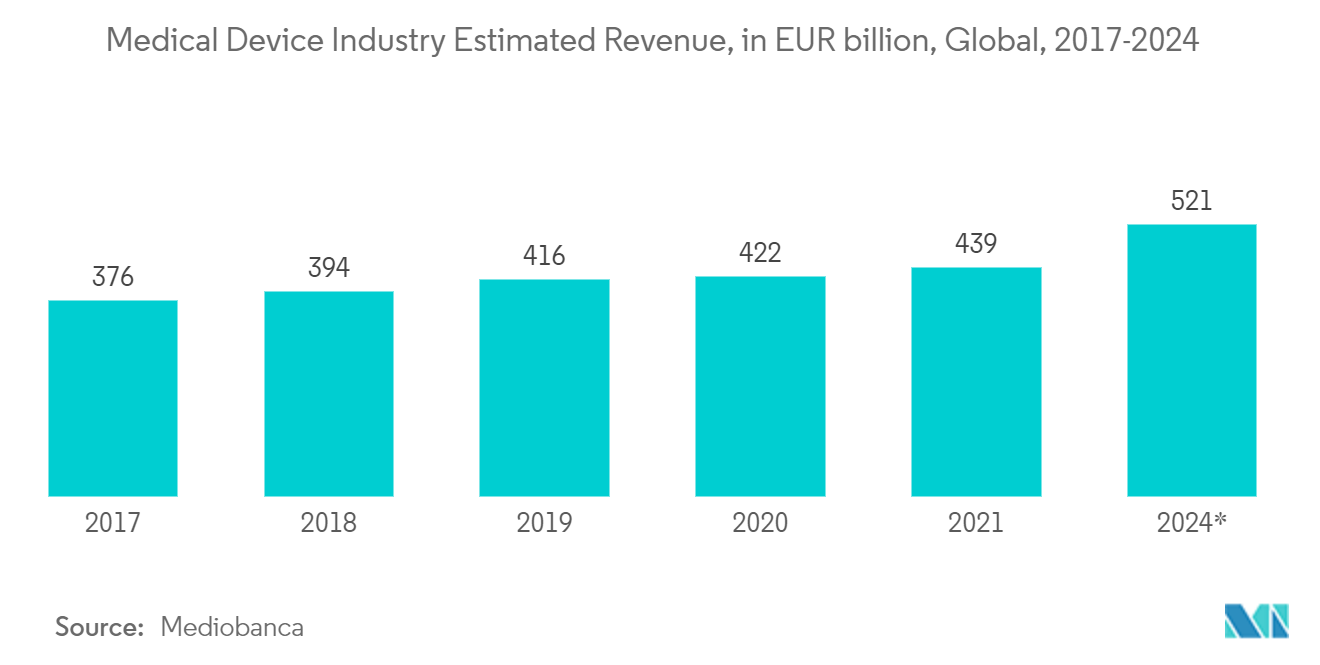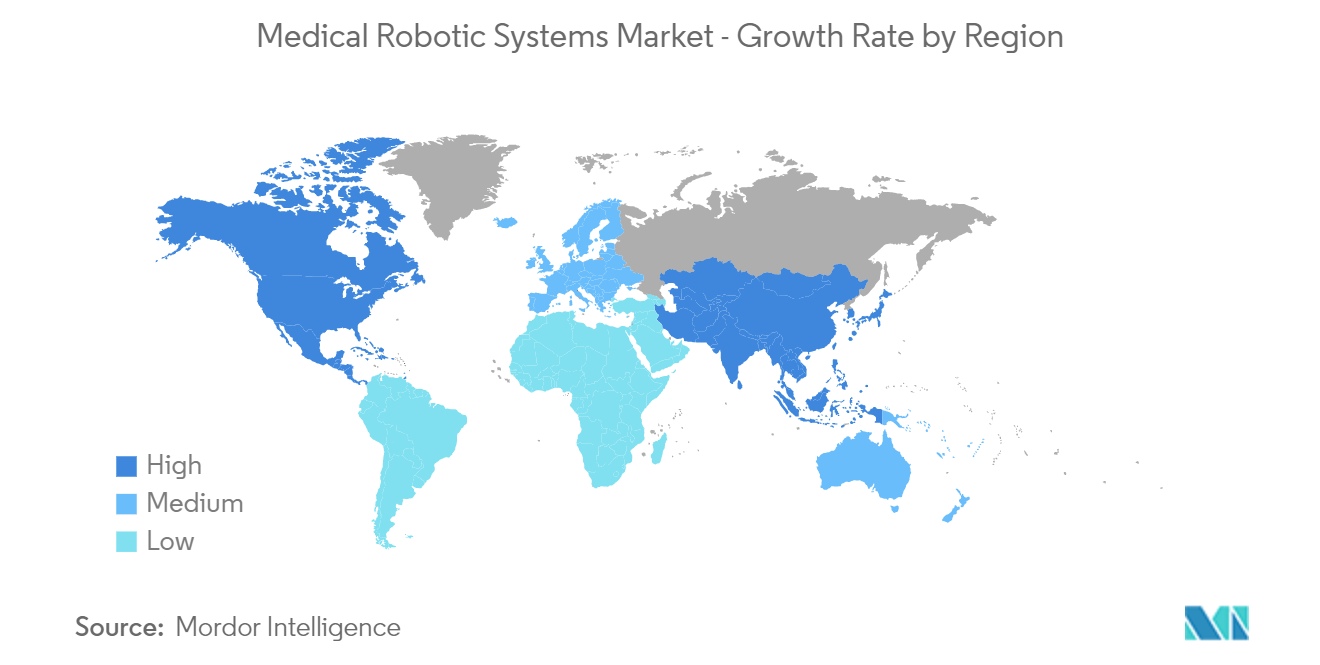Market Trends of Medical Robotic Systems Industry
Surgical Robots to Dominate the Market
Robotic surgery is a minimally invasive surgery utilizing robotics for performing surgical procedures. These robotic systems are operated by surgeons and consist of miniaturized surgical instruments mounted on robotic arms, thus allowing surgeons to perform the surgeries precisely.
The key factors boosting the surgical robots segment are the increasing need for healthcare automation and the trend toward advanced robotic surgeries. To address motion and tissue resistance, researchers are developing new strategies with the adoption of collaborative robots. For instance, Collaborative robots assist in lowering the possibility of human contamination in delicate operations and sterile settings.
The surgical robotics segment accounted for a significant portion of medical robotics, owing to the rising adoption of robotic surgical systems across Tier-1 hospitals, demand for highly efficient replaceable components, increase in the volume of robotic procedures performed worldwide, and growing demand for instruments & accessories due to their recurring need per procedure.
Another major factor driving the adoption of surgical robots is that robotic surgeries have effectively solved the drawbacks of conventional laparoscopic and thoracoscopic surgery, enabling the completion of intricate and advanced surgical procedures with higher precision and a minimally intrusive method. Growing investment in advanced medical devices also creates a favorable outlook for the growth of the studied market. For instance, according to Mediobanca, an investment banking company, the revenue of the medical device industry is anticipated to grow from EUR 376 billion (~USD 402 billion) in 2017 to EUR 521 billion (~USD 557 billion) by 2024.
Furthermore, there is projected to be a major increase in the market's demand for surgical robots. This can be attributed to the increasing use of surgical robots in a variety of surgical procedures, including bariatric surgery, heller myotomy, gastrectomy, hernia repair, cholecystectomy, transoral surgery, and pancreatectomy, as well as an increase in the volume of general surgery procedures performed globally.

Asia Pacific to Witness the Highest Growth
The demand for the advanced and innovative healthcare infrastructure system in APAC will witness healthy growth during the forecast period. Medical robotics' market potential in the APAC area is expanding quickly. Governments across various countries are also looking for technological breakthroughs in their medical and pharmaceutical sectors, which are also critical to market expansion. This opens the door for greater accessibility to medical robotics, additional advancements, and larger investment in the upcoming years.
China contributes a majority of its market share in the region. Chinese demand for medical robots is mainly driven by the increasing adoption of instrument-based services. The demand is also supported by other factors, such as the lack of skilled physiotherapists and caretakers.
According to the South China Morning, while the da Vinci system is broadly used in China in more than 60,000 operations to date, the Chinese government is eager to reduce its dependence on foreign technology; as a result, it has backed more than 30 MedTech manufacturers who develop intelligent robots and robotic medical devices, including surgical robots in the past few years.
Such trends are also encouraging medical device manufacturers further enhance their R&D efforts to develop innovative solutions. For instance, in September 2022, a Shanghai-based robotics enterprise developed a four-arm laparoscopic surgical robot to help doctors carry out complex surgeries in narrow spaces.
Furthermore, in the ZhongkaiHi-Tech zone in Huizhou, SS Innovations is developing and testing an affordable, modular robotic surgical system capable of complex motion control. The company is working with a budget of around USD 15 million from the Chinese government to recruit and train talent worldwide.
Because Australia has been using robotic-assisted minimal access surgery (MAS) for approximately 20 years, the Australian medical robotics sector is well-sophisticated. Versius, a surgical robot designed to reduce the heavy physical demand on surgeons using conventional surgical robots, was recently introduced in Australia, demonstrating and securing the nation's position in the worldwide medical robotics industry.


